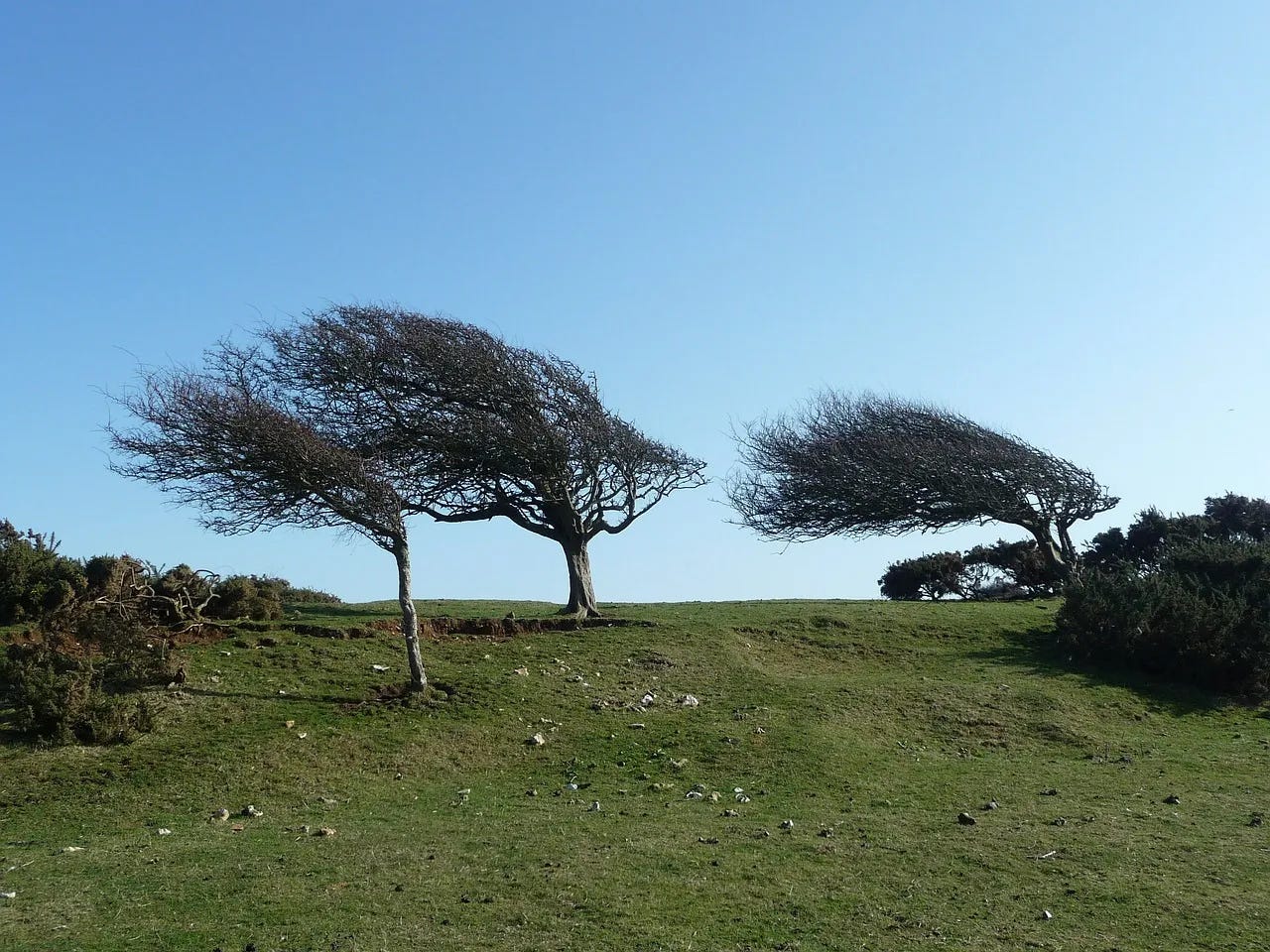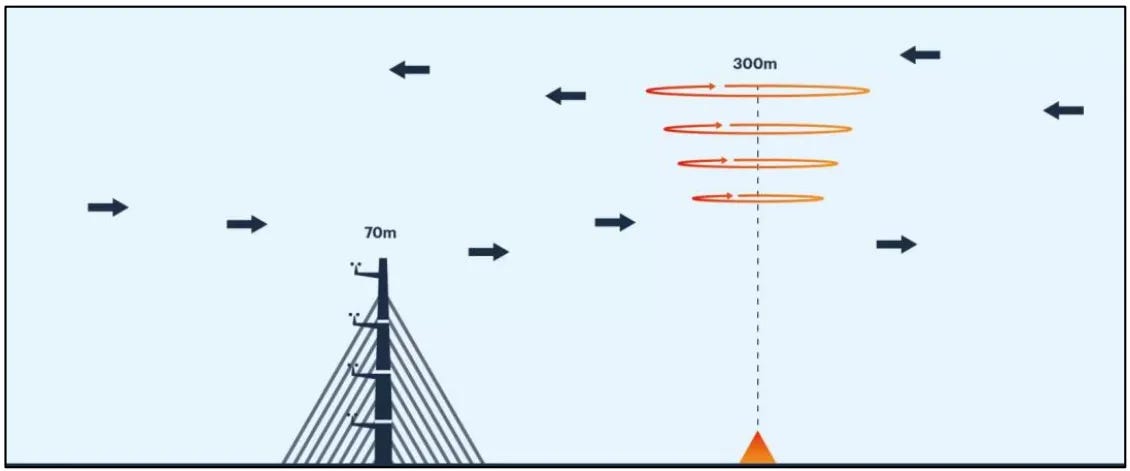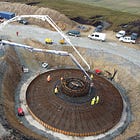Windguest #1 - Understanding wind resource (I)
The evaluation of wind resources is key in the development of wind farms and their financing: wind measurements, long-term estimation, and vertical extrapolation.
Hello everyone and welcome to a new the first issue of Windguest, the guest contributors' section of Windletter. I'm Sergio Fernández Munguía (@Sergio_FerMun) and here we discuss the latest news in the wind power sector from a different perspective. If you enjoy the newsletter and are not subscribed, you can do so here.
Windletter is sponsored by:
🔹 Tetrace. Specialized services in operation and maintenance, engineering, supervision, inspection, technical assistance, and distribution of spare parts in the wind sector. More information here.
🔹 RenerCycle. Development and commercialization of solutions and specialized services in the circular economy for renewable energies, including comprehensive dismantling of wind farms and waste management, refurbishment and sale of components and wind turbines, management and recycling of blades and others. More information here.
Windletter está disponible en español aquí
As you already know, from time to time, we bring guest contributors to Windletter, allowing us to cover new topics explained by experts in the sector.
Until now, these editions were grouped under the #Windstory section, whether or not they were written by guest contributors. However, #Windstory was starting to become a catch-all category, mixing feature stories, opinion pieces, and more technical articles under the same umbrella.
Therefore, in an effort to keep the content better organized, I’ve decided to create a new section to group all articles written by guest contributors: #Windguest.
The first edition of #Windguest comes from Alberto Quintana Infante, currently Head of the Wind Resource Area at Hanwha Energy Corporation Europe.
Alberto brings us the first part of a two-article series (at least for now) where he explains the fundamentals of wind resource analysis. This is a critical topic in the sector because without wind, there are no wind farms. But even with abundant wind, if it’s not analyzed correctly, projects cannot succeed.
I’ll leave you with him.
🌬️ Understanding wind resource: wind measurements, long-term estimation, and vertical extrapolation
Each stage of a wind resource study is crucial for estimating a wind farm's energy production with the least possible uncertainty.
During the development phase of wind farms, this evaluation is essential to understand the energy potential of the site and analyze the characteristics of the wind regime in terms of speed, direction, frequency, variability, turbulence, or extreme events. These factors not only help predict production and optimize the project but also determine its economic feasibility.
Below, I’ll review the main phases of these studies, focusing on their utility and importance, as well as their impact on the final uncertainties of the project. In this first part, I’ll cover the first three, leaving the rest for a second article:
📡 Wind measurements
📈 Long-term estimation
⬆️ Vertical extrapolation
➡️ Horizontal extrapolation
📊 Power curve and wind turbine model
🌪️ Wake models
📉 Technical and operational losses
❓ Variability and uncertainties
All of these are fundamental to determining the AEP (Annual Energy Production) values commonly used in project financial models. The most commonly used are the P50, P75, and P90 percentiles.
👉 P50, P75, and P90 percentiles indicate confidence levels regarding a wind farm's energy production. In other words, they express the probability that the calculated energy value will be exceeded.
P50: The expected average production value (50% probability of being exceeded).
P75: A moderately conservative production value (75% probability of being exceeded).
P90: A more conservative production value for risk analysis (90% probability of being exceeded).
📡 1. Wind measurements
Although the use of “virtual wind series” or mesoscale data is increasingly widespread for preliminary studies and the quality of these products is improving, it is well known in the sector that real on-site measurements are still absolutely necessary.
The questions here are always the same: When should we start measuring? How long should the campaigns last? At what heights should these measurements be taken? What sensors should we install, and how many?
Whenever possible, the key is to design a measurement campaign that aligns as closely as possible with our initial project concept (extent, number of wind turbines, turbine model). This will determine the number of measurement points, their location, the necessary equipment, and the measurement heights.
It’s also important to note that, to properly characterize the wind, measurements must be taken for at least one year (although extending this to 2–3 years is always recommended) to capture the full annual cycle and the wind’s seasonality. Starting the measurements earlier or later depends on the developer’s criteria, but having this data as soon as possible can help avoid future surprises.
The most common option in wind farm development remains the guyed lattice tower equipped with cup anemometers, wind vanes, and sensors for temperature, relative humidity, and atmospheric pressure.
A good selection of equipment, proper calibration, and installation (complying with MEASNET requirements and IEC 61400-12-1 standards) are crucial to ensuring the lowest uncertainty in the campaign.

Once the campaign is completed, it’s essential to process and clean the records to obtain high-quality statistics: frequency distribution, Weibull distribution, wind roses, seasonal characteristics, turbulence intensity, among others.
Moreover, daily monitoring of the measurements becomes a key process to ensure high availability of the data and to act quickly when issues or errors are detected.
All the above will shape the course of the resource study, as the measurement campaign forms the foundation not only for energy estimation, which we’ll discuss later, but also for validation by the turbine manufacturer for site suitability.
👉 A site suitability study is an evaluation conducted by wind turbine manufacturers to ensure their turbines are suitable and safe to operate at a specific location, analyzing aspects such as wind speed and turbulence, adverse weather conditions, terrain characteristics, and structural durability.
📈 Long-term estimation
Continuing with the questions: Was our measurement campaign representative of the long term? It could happen that, due to random meteorological variability, the measurements were taken during an especially good or bad year.
To answer this, the temporal variability of the wind regime at our site must be analyzed.
This is where reanalysis datasets (ERA5, MERRA2, CFSR, etc.) come into play. These global databases, with records spanning up to 40 years, serve as a reference and allow for identifying trends, temporal cycles, or potential anomalies in the campaign by performing a temporal extrapolation (MCP—Measure-Correlate-Predict processes).
This way, we can determine the expected long-term wind speed and any necessary corrections to the original measurements.
Temporal extrapolation also allows for generating production series of up to 30 years, which are essential when evaluating financial models or conducting studies such as complementarities with other generation sources (e.g., hybridization with solar PV).
⬆️ Vertical extrapolation
If we’ve designed a good measurement campaign, we’ll have data at different heights to characterize the vertical wind profile at our site. We might even have measurements at the same hub height as the wind turbine model to be installed.
But what happens beyond the maximum height at which we’ve measured? What if the hub height is greater?
Different models exist to perform vertical extrapolation of the measurements. However, it’s always recommended to first evaluate the different behaviors of the vertical profile depending on wind direction, time of day, and temporal distribution, to detect trends and ensure these results align with terrain characteristics or the presence of potential obstacles.
How can we reduce the uncertainty associated with this extrapolation? There are two main approaches:
Reach measurement heights of at least 2/3 of the hub height being considered.
If there are doubts, install a remote sensing device (SODAR/LIDAR) in parallel for a sufficient period, as these devices can measure up to 300 meters in height.
In the second part, we’ll continue analyzing the remaining aspects:
➡️ Horizontal extrapolation
📊 Power curve and wind turbine model
🌪️ Wake models
📉 Technical and operational losses
❓ Variability and uncertainties
Subscribe if you don’t want to miss it.
Read other guest contributors:
Thank you very much for reading Windletter and many thanks to Tetrace and RenerCycle, our main sponsors, for making it possible. If you liked it:
Give it a ❤️
Share it on WhatsApp with this link
And if you feel like it, recommend Windletter to help me grow 🚀
See you next time!
Disclaimer: The opinions presented in Windletter are mine and do not necessarily reflect the views of my employer.








